Benedetta
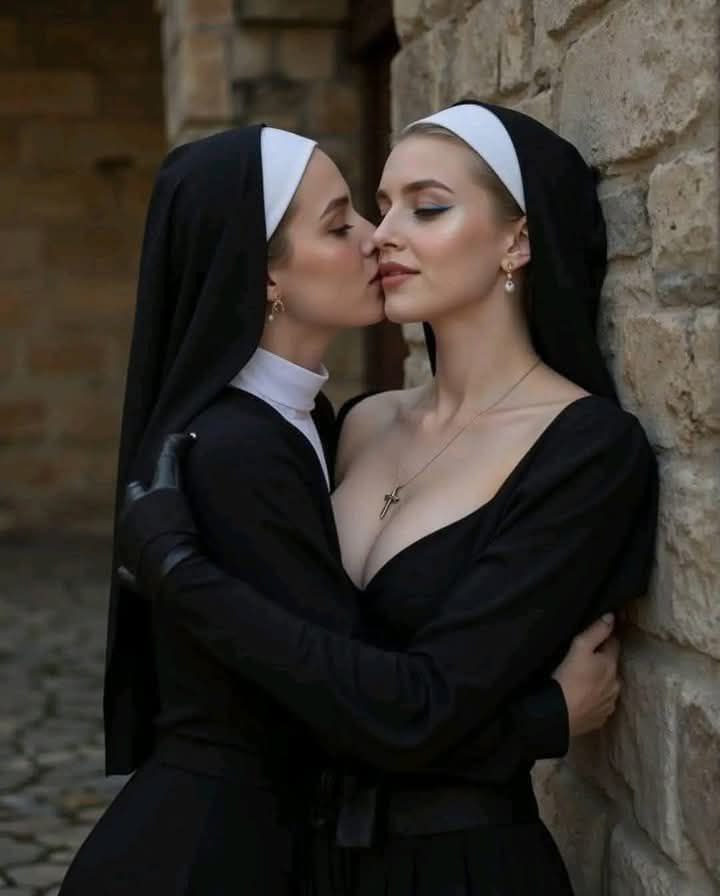
Benedetta: Paul Verhoeven’s Provocative Tale of Faith and Transgression
Introduction
Benedetta (2021), directed by Paul Verhoeven, is a French-language biographical psychological drama that delves into the scandalous life of Benedetta Carlini, a 17th-century Italian nun whose religious visions and forbidden lesbian affair shook the Catholic Church. Co-written by Verhoeven and David Birke, the film is loosely based on Judith C. Brown’s 1986 book Immodest Acts: The Life of a Lesbian Nun in Renaissance Italy. Premiering in competition for the Palme d’Or at the 74th Cannes Film Festival on July 9, 2021, Benedetta is a bold, provocative exploration of faith, ***, and power, blending Verhoeven’s signature mix of satire, eroticism, and social critique. With its explicit content and irreverent tone, the film sparked controversy while captivating audiences with its lush visuals, fearless performances, and challenging themes. Benedetta stands as a testament to Verhoeven’s enduring ability to provoke and entertain, even at age 82.
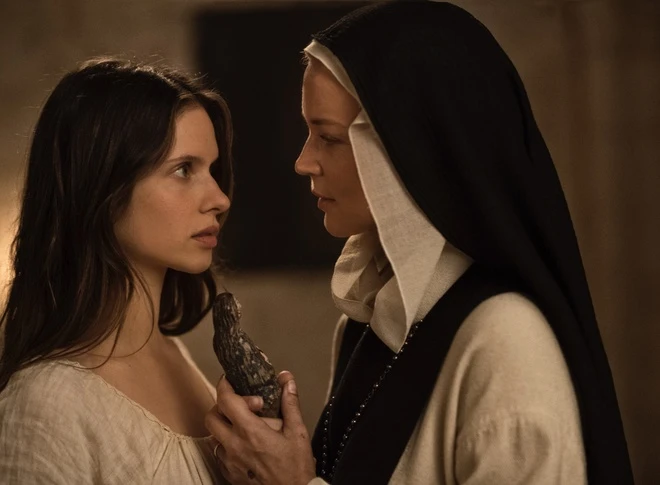
Plot Summary
Set in 17th-century Pescia, Tuscany, Benedetta begins with young Benedetta Carlini (Elena Plonka), a devout girl whose parents enroll her in the Theatine Convent of the Mother of God, essentially purchasing her place as a “bride of Christ” with a dowry haggled over by the sharp-witted Abbess Felicita (Charlotte Rampling). Eighteen years later, an adult Benedetta (Virginie Efira) experiences vivid visions of Jesus, which she interprets as divine signs of her special connection to God. Her performances in a convent play as the Virgin Mary amplify these visions, but their authenticity is questioned by the skeptical Felicita.
The arrival of Bartolomea (Daphné Patakia), a young woman seeking refuge from an abusive father, disrupts the convent’s order. Assigned to guide Bartolomea, Benedetta forms an immediate connection with her, sparked by a bold kiss from the newcomer. As their relationship evolves into a passionate, secret affair—marked by explicit scenes, including the use of a wooden Virgin Mary statuette as a sex toy—Benedetta’s visions intensify. She develops stigmata on her hands and feet, leading to her controversial elevation to abbess, displacing Felicita. However, suspicions arise, particularly from Felicita’s daughter Christina (Louise Chevillotte), who falsely claims to have seen Benedetta self-inflict her wounds.
As the Black Plague looms and a comet lights the sky, Benedetta’s claims of divine visions and her affair with Bartolomea draw scrutiny. Felicita, spying through a peephole, discovers their relationship and reports it to the papal nuncio (Lambert Wilson) in Florence. A trial ensues, with Bartolomea tortured into confessing their affair, revealing the hidden dildo. Benedetta’s brief death and miraculous revival further fuel the controversy, as she proclaims visions of heaven. The film builds to a climactic confrontation, blending religious fervor, political intrigue, and personal betrayal, leaving viewers to question the line between faith, manipulation, and desire.
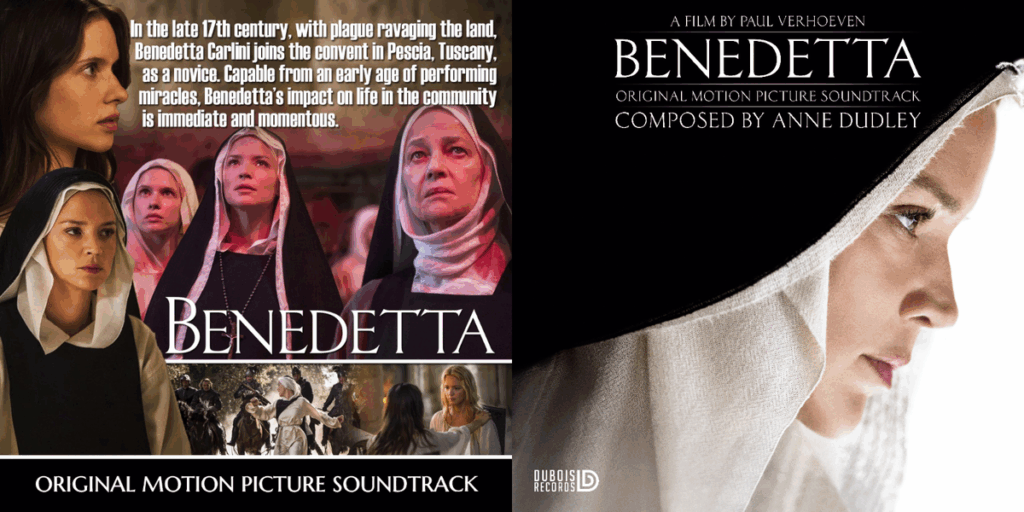
Cast and Characters
Benedetta features a stellar cast that brings its complex narrative to life:
- Virginie Efira as Benedetta Carlini: Efira delivers a fearless, nuanced performance, balancing Benedetta’s devout faith, ambition, and sensuality as she navigates her visions and forbidden love.
- Daphné Patakia as Bartolomea: Patakia’s Bartolomea is earthy and defiant, her chemistry with Efira igniting the film’s provocative core.
- Charlotte Rampling as Abbess Felicita: Rampling’s calculating, cynical abbess steals scenes with her sharp wit and moral ambiguity.
- Lambert Wilson as The Nuncio: Wilson’s portrayal of the corrupt papal representative adds a layer of institutional menace.
- Louise Chevillotte as Christina: Chevillotte brings intensity to the conflicted daughter of Felicita, whose actions drive the narrative’s tension.
- Olivier Rabourdin as The Provost: Rabourdin’s church official embodies the opportunistic side of religious politics.
Supporting performances, including Clotilde Courau and Hervé Pierre, enrich the convent’s claustrophobic world, capturing the era’s religious and social dynamics.
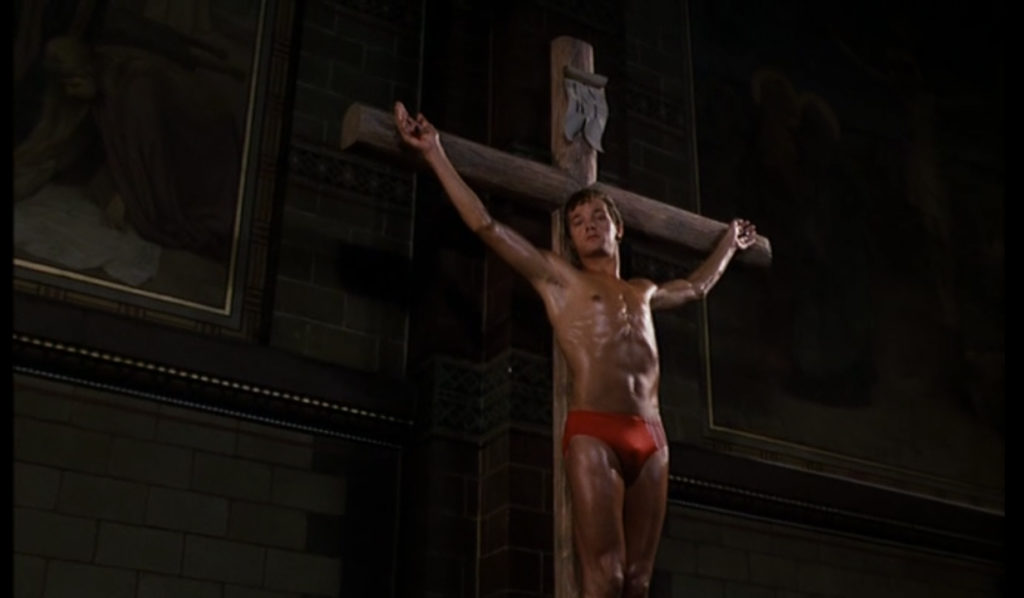
Themes and Symbolism
Benedetta is rich with themes that reflect Verhoeven’s fascination with power, sexuality, and institutional hypocrisy:
- Faith vs. Manipulation: The film leaves ambiguous whether Benedetta’s visions are genuine or a calculated bid for power, questioning the nature of religious sincerity in a corrupt system.
- ***: The *** challenges the Church’s control over the female body, portrayed as both sinful and liberating.
- Power and Gender: Benedetta’s rise to abbess in a male-dominated world highlights women’s limited agency, with her sexuality and visions as tools for influence.
- Religious Hypocrisy: The film critiques the Church’s greed and moral contradictions, from dowry negotiations to the nuncio’s corruption.
- Body and Divinity: Verhoeven’s focus on bodily functions—defecation, nudity, and sex—contrasts with spiritual ideals, suggesting the body is both a source of sin and humanity.
Symbolism abounds, with the Virgin Mary statuette-turned-dildo serving as a provocative emblem of blending the sacred and profane. The plague and comet symbolize divine judgment, while Benedetta’s stigmata blur the line between miracle and deception.

Production and Development
Directed by Paul Verhoeven and co-written with David Birke, Benedetta was produced by SBS Films and Pathé, with co-production from France 2 Cinéma, France 3 Cinéma, Topkapi Films, and Belga Productions. Filming took place in France and Italy, with Montepulciano and Bevagna standing in for 17th-century Pescia. The production reunited key crew from Verhoeven’s Elle (2016), including producer Saïd Ben Saïd, writer Birke, composer Anne Dudley, and editor Job ter Burg.
Cinematographer Jeanne Lapoirie’s lush visuals capture the contrast between the convent’s austere interiors and Benedetta’s vivid, CGI-enhanced visions, which echo the violent, exaggerated style of Verhoeven’s earlier works. Anne Dudley’s score incorporates period-appropriate chants, like Dies Irae, to evoke the era’s ominous atmosphere. The film’s budget, estimated at $20 million, supported its detailed period costumes and sets, designed by Katia Wyszkop, which immerse viewers in Renaissance Italy.
Verhoeven, known for RoboCop (1987), Basic Instinct (1992), and Showgirls (1995), leaned into his provocative style, drawing comparisons to Ken Russell’s The Devils (1971). The film’s explicit content was intentional, reflecting Verhoeven’s interest in the body as a site of rebellion against religious dogma.
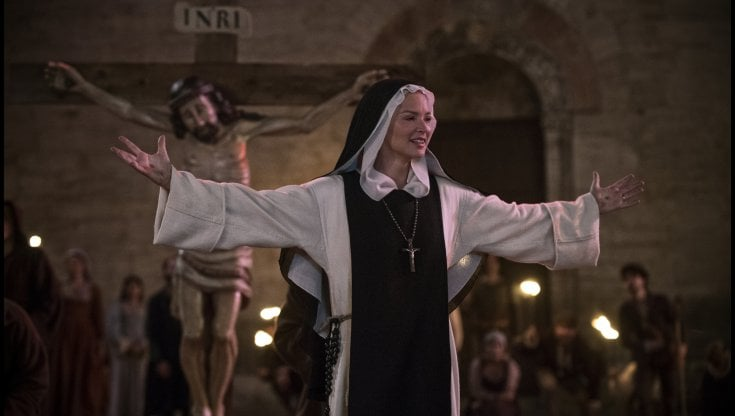
Reception and Impact
Benedetta premiered to polarized reactions at Cannes, with critics praising its audacity and performances while some found its tone uneven or overly sensational. It holds a 84% approval rating on Rotten Tomatoes, with reviewers noting its “precarious walk between genres” and “salient questions about sexual freedom and faith.” Roger Ebert’s review called it a “fascinating, overcrowded” work that distills Verhoeven’s career-long themes, though not always cohesively. The Guardian described it as “more playful than profane,” suggesting it was tamer than expected for Verhoeven.
The film grossed $2.8 million worldwide, limited by its controversial content and niche appeal. It faced protests from Catholic groups like The American TFP at the New York Film Festival and was banned in Singapore and Russia for its *** and perceived blasphemy. Social media reactions on X highlighted its “” nature, with Virginie Efira’s performance earning particular praise.
Benedetta sparked debate about its portrayal of religion and sexuality, with some viewing it as exploitative “” and others as a feminist critique of Church patriarchy. Its explicit scenes, including *** and violence, earned it an NR rating and an age 17+ advisory.
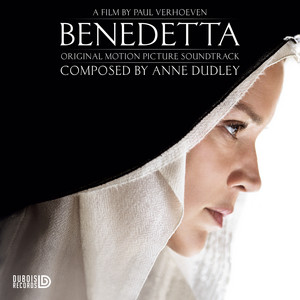
Legacy and Influence
Benedetta has solidified Paul Verhoeven’s reputation as a provocateur unafraid to tackle taboo subjects. Its blend of historical drama, eroticism, and satire aligns it with Verhoeven’s earlier works while pushing boundaries in the context of 17th-century religious life. The film’s exploration of lesbianism in a historical setting drew comparisons to films like Portrait of a Lady on Fire (2019), though its explicitness and campy tone set it apart.
The film’s influence lies in its bold questioning of religious authority and gender dynamics, inspiring discussions about faith, power, and bodily autonomy. Its visual and thematic audacity has made it a touchstone for fans of Verhoeven’s oeuvre and scholars of “nunsploitation” cinema. The performances of Efira, Patakia, and Rampling continue to be celebrated, with Rampling’s sly Abbess Felicita often cited as a highlight.
Benedetta also paved the way for further exploration of queer narratives in historical dramas, challenging audiences to reconsider the intersection of spirituality and ***. Its availability on streaming platforms like MUBI has ensured its accessibility to a global audience, sustaining its cult status.

Conclusion
Benedetta is a daring, polarizing addition to Paul Verhoeven’s filmography, blending historical biography with provocative satire to explore the life of Benedetta Carlini. With its fearless performances, lush cinematography, and unapologetic embrace of the sacred and profane, the film challenges viewers to grapple with questions of faith, power, and desire. While its explicit content and ambiguous tone sparked controversy, Benedetta remains a compelling study of a woman navigating a repressive world, leaving an indelible mark on contemporary cinema. Whether viewed as blasphemous or liberating, it is undeniably Verhoeven—uncompromising, audacious, and impossible to ignore.